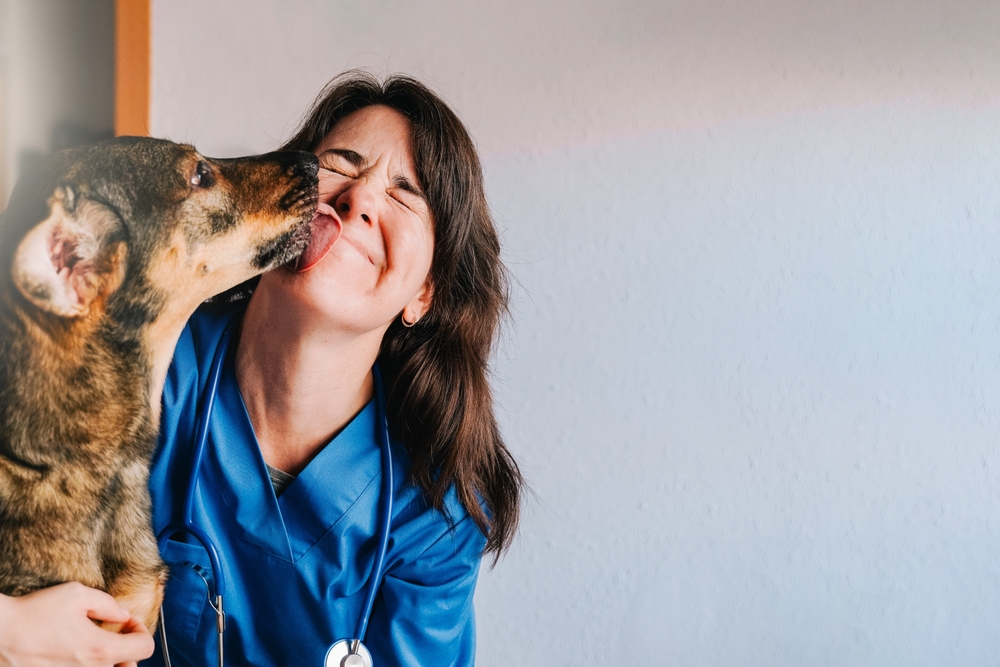At Animal Hospital Southwest in Fort Worth, Texas, we know how nerve-wracking vet visits can be for both pets and their owners. But the stress your pet feels doesn’t have to be limited to the vet’s office—it can happen at home during regular handling too. That’s why we’re big advocates of low-stress handling techniques. This compassionate approach focuses on reducing your pet’s anxiety during day-to-day care and making trips to the vet less stressful. By incorporating these methods, you can help your pet feel more at ease in a variety of situations.
Understanding Your Pet’s Body Language
Before you can reduce your pet’s stress, it’s important to recognize the signs that they’re feeling anxious or fearful. Every pet reacts a little differently, but some common signs of stress include:
- Whining or barking: This could be a clear sign that your dog is feeling uncomfortable or scared.
- Panting or rapid breathing: If it’s not hot or your pet hasn’t been exercising, panting can be a sign of anxiety.
- Trembling or shaking: Often, this is a direct response to fear or nervousness.
- Yawning: While yawning can indicate tiredness, in stressful situations it’s more likely a sign of anxiety.
- Licking lips or nose: This self-soothing action is common in nervous pets.
- Avoiding or hiding: If your pet is trying to escape or hide, they may be feeling overwhelmed.
By understanding these signs, you’ll be better equipped to help your pet manage their stress. Whether at the vet or at home, paying attention to body language is the first step toward creating a more relaxed environment for your pet.
Creating Positive Associations with Handling
Many pets are naturally apprehensive about being handled, especially when it comes to sensitive areas like their paws, ears, or mouth. But the good news is that you can help your pet become more comfortable with gentle handling by taking a few simple steps:
- Pair touch with rewards: When you handle a sensitive area, follow up with something positive—like a treat or a favorite toy. This will help your pet associate handling with good things.
- Gradual desensitization: Start with brief handling sessions, slowly increasing the time as your pet becomes more comfortable. Over time, your pet will get used to being touched in those areas without feeling threatened.
- Use positive reinforcement: Always speak in a calm, reassuring voice and offer praise and rewards to encourage cooperative behavior.
- Avoid punishment: Reacting negatively to your pet’s stress signals can make things worse. Instead, remain calm and patient, focusing on building trust.
Low-Stress Handling Techniques to Use at Home
When it comes to making your pet’s daily care less stressful, there are several low-stress handling methods you can use at home:
- Use treats and praise generously: Positive reinforcement goes a long way in helping your pet feel safe and rewarded during grooming or handling sessions.
- Introduce new equipment slowly: If you’re introducing something new—like a harness or carrier—give your pet time to explore it at their own pace. This allows them to feel more comfortable before you start using it.
- Avoid unnecessary restraint: Whenever possible, let your pet move freely during handling sessions. If restraint is necessary, make sure it’s gentle and brief.
- Consider calming aids: Products like pheromone diffusers, calming treats, or anxiety vests can help reduce your pet’s stress levels. For more information on these tools, check out our Preventative Care page.
By creating a positive and stress-free environment at home, you’ll make everyday handling much more enjoyable for both you and your pet.
Preparing for Veterinary Visits

Many pets feel anxious about vet visits, but there are steps you can take to make the experience less stressful for them:
- Carrier training: Help your pet get used to their carrier by keeping it out with the door open and placing soft bedding or a favorite toy inside. This way, they’ll see it as a safe space rather than something to fear.
- Practice car rides: Many pets associate car rides with trips to the vet, which can make them anxious. To break this association, take your pet on short, fun car rides to places they enjoy, like a park.
- Schedule a “happy visit”: Bring your pet to Animal Hospital Southwest for a short, non-medical visit where they can receive treats and affection. This helps them build positive associations with our clinic.
With a little preparation, you can make vet visits a more positive experience for your pet.
When to Seek Professional Help
While most pets can benefit from low-stress handling techniques, some may need extra help if their anxiety is severe. If your pet shows extreme fear, aggression, or other troubling behaviors, it’s important to consult with a veterinarian. At Animal Hospital Southwest, our team is trained in managing pets with high anxiety, and we can discuss options like behavioral therapy or anxiety medication if needed.
Calm and Comfortable
Low-stress handling techniques are a powerful way to help your pet feel calm and comfortable during everyday care and vet visits. By taking the time to understand your pet’s body language, creating positive associations, and using gentle handling methods, you’ll build trust and reduce anxiety. If you’d like more guidance on how to help your pet feel more relaxed, or if you’re ready to schedule an appointment, contact us at Animal Hospital Southwest.







Leave A Comment